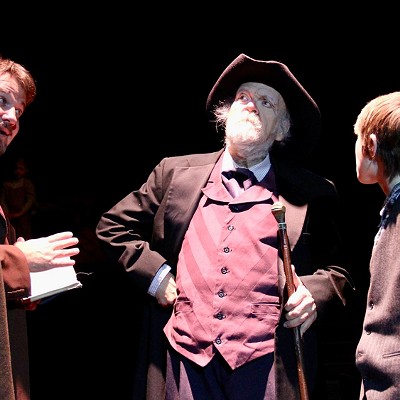Mick Cornett
1. Public safety: “We can have all the quality-of-life amenities, but if people don’t feel safe in their neighborhoods, it’s meaningless. That’s why the last decade, we’ve consistently put two-thirds of our budget towards public safety, we’ve used the MAPS 3 use tax to fund a new police fleet and new police helicopters, we’re building a new police headquarters and we’ve added over 70 new police officer positions the last two years. Those efforts are why 70 percent of our citizens said in our annual survey last year that they’re satisfied with our police service. But we can always do more, and in my next four years as mayor, we will.”
2. Quality jobs: “For most of the last few years, we’ve had the lowest unemployment in the nation and the highest income growth. There’s a lot of reasons for that, including our business-friendly City Hall; our investments in quality-of-life, like the Thunder and MAPS 3; our economic incentives; and our aggressive approach to courting new business. But as good as things are, I think our efforts to attract young entrepreneurs means that the best is yet to come. I intend to continue the policies that have led us to this incredible economic success.”
3. Streets: “We’re putting over half a billion dollars into improving our streets. That is unprecedented, and there is more to come. We’re a large city with a lot of street inventory to keep up with, but making sure those street improvement efforts continue across the city is a strong priority of mine.”
Ed Shadid
1. Citywide comprehensive plan: “Develop a comprehensive plan and elevate planning to its rightful pedestal in city government. Trying to deliver city services to 620 square miles is very unusual for an American city and requires an emphasis on planning to maintain fiscal strength and adequate delivery of services. We have not had a comprehensive plan in 30 years, and the fact that our planning director, along with so many other planners, has left the city during the development of our comprehensive plan should be a red flag.”
2. Transit system: “Public transit development is about much more than just bus/streetcar function; it is about the integration of transit with government, residential and commercial development along the transit line. We are one of the only large cities in the U.S. that does not have public transit in the evenings, Sundays or on holidays. If we simply split advertising revenue with the advertising companies who own the bus benches, as is done in virtually every large city in the U.S., we would have the $2.5- $3 million a year it would take. ... We are also an outlier in that we do not having a dedicated funding source for transit and do not participate in a Regional Transit Authority.”
3. Neighborhood decay: “A study released this last month points out that we fund our neighborhood parks at very low levels compared to other American cities. Developing hubs of activity throughout the city by investing in ‘complete streets,’ neighborhood plazas and parks, street lights and trees and then surrounding them with mixed-use retail and residential buildings and connecting these hubs with transit, trails and sidewalks would dramatically improve the health and happiness of the people of Oklahoma City.”
Joe “Sarge” Nelson?
City infrastructure: “To first get a handle on this city’s infrastructure and back under control [and to] review and oversee all the MAPS projects to a proper completion.”
Phil Hughes
High speed rail: “The first priority is to develop a metro light rail system where Hughes Synergies MetNet is optimal” and would connect Guthrie, El Reno, Norman and Shawnee.








